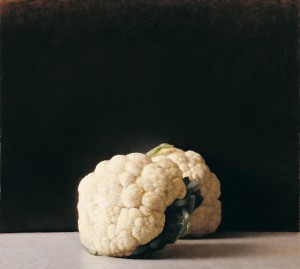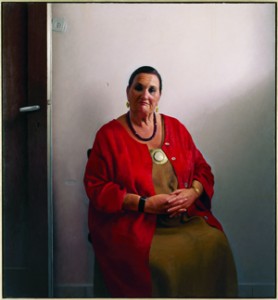By Angela Levine
“The Bitter Taste of Realism in Israeli Art” was the title of an article that appeared in Studio, a local art magazine, in the early 1990s. Written by art historian Gideon Ofrat it bemoaned the lowly status of figurative painting in a country where for decades the realist option had all but disappeared due to the long term domination of abstract painting. But now, less than 20 years on, the revival of the realist tradition in painting is being marked at the Tel Aviv Museum with an exhibition of figurative paintings in the classical tradition by Aram Gershuni.
This realist revival started slowly with the immigration to Israel of several realist painters from America in the 1980s. Prominent among them was Israel Hershberg who opened up the Jerusalem Studio School for realist painting in 1998. A master painter, Hershberg became Aram Gershuni’s inspiration and mentor. When interest in realist painting spread to Tel Aviv, Gershuni co-founded Tachana, a school for figurative painting which has its premises in the vicinity of the Central Bus Station.
In writing about Aram Gershuni, mention must be made of the achievements of his parents, artists of importance in the short history of Israeli art. Moshe Gershuni, a rebel and conceptual artist in his youth, is renowned for his expressive paintings with their biblical, social or sensual messages; while the name of Bianka Eshel Gershuni is associated with the design of highly original sculpture and jewelry incorporating kitsch and erotica that allude to personal conflicts as well as to feminist issues.
In contrast to his father, Aram Gershuni is interested only in the act of painting; his aims centered on making a perfect work of art devoid of messages and stories. Each of his pictures takes many months to complete. He employs the “color spot’ method of painting originating early 20th century with American realist painter Charles Hawthorne (1872-1930) and passed on to Hershberg via his teacher Francis Cunningham, a student of Hawthorne. “Painting,” Hawthorne said “is just getting one spot of color (right) in relation to another spot…. Let color make form, do not make form and color it.”

An uncompromising portrait of Moshe Gershuni, wearing a red track suit, arms akimbo, staring straight ahead, hangs at the entrance to Aram’s exhibition. He is on guard, as it were, over the 20 oil paintings on display, all completed by son during the last five years. Here are landscapes and some remarkable still life studies of fruit and vegetables where, exercising masterly restraint over tones, textures and surfaces, Aram confers an iconic presence on humble cauliflowers and a cabbage.

The dominant work in this show is undoubtedly the powerful portrait of mother, sold to a private collector for $ 40,000. Bianca Eshel Gershuni is positioned against a blank wall, daylight falling onto her body from the side. She wears a dramatic red jacket, a large brooch pinned to a brown dress, a heavy chain of beads round her throat. Nevertheless, one’s eyes are not drawn first to her clothing but to her sturdy looking hands resting in her lap. Although the fingers are locked together, the impression given is of someone whose hands are not accustomed to being still.
Bianca’s face is presented without any trace of sentimentality, her expression and every facial detail delineated with the same precision that her son accords to his still life studies. If anyone out there believes that photography has made realistic painting obsolete, they should view this picture and think again.






Good article — yet, in terms of message – don’t Gershuni’s portraits convey one, perhaps in spite of the artist’s intentions?
Comments are closed.